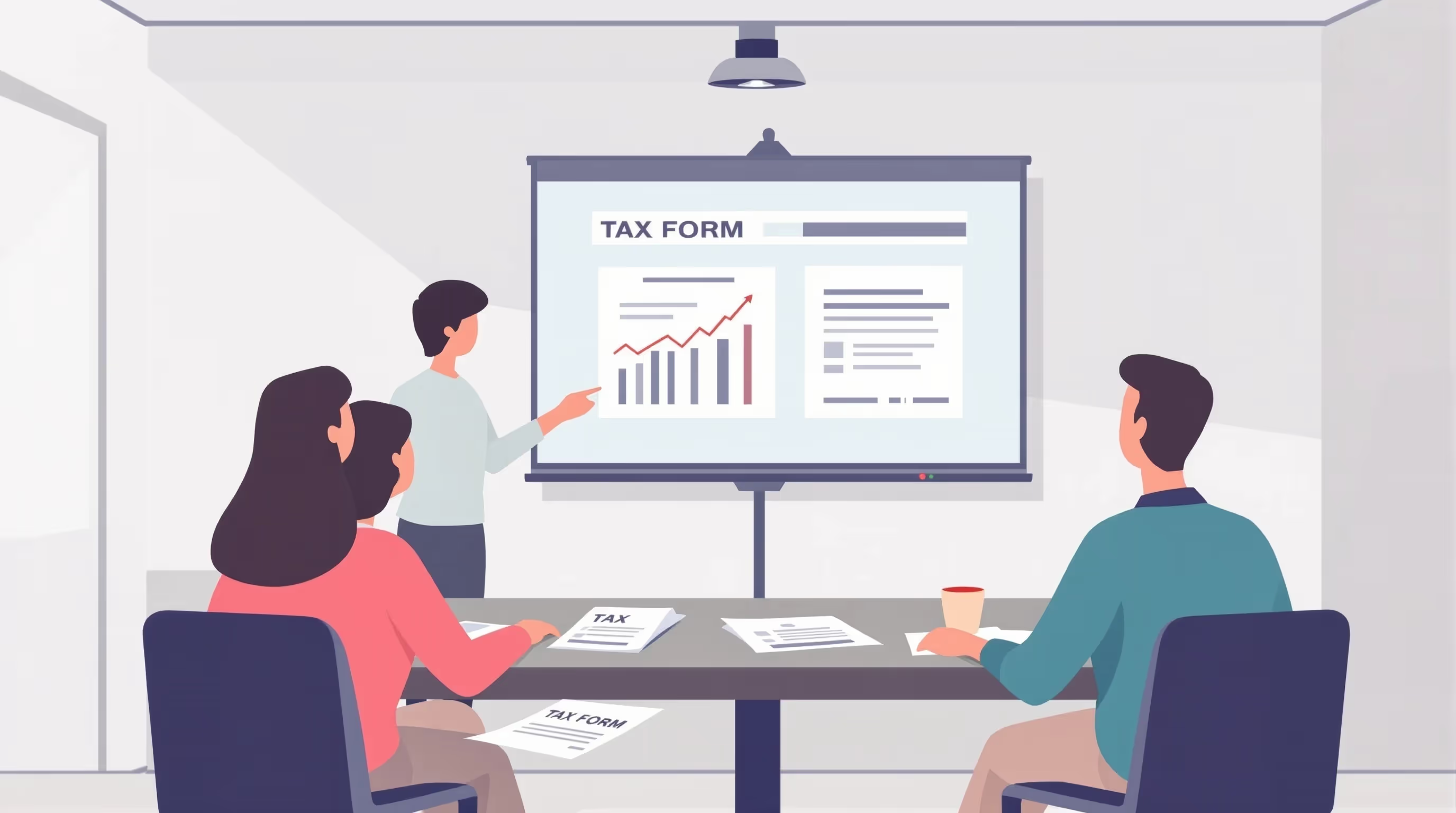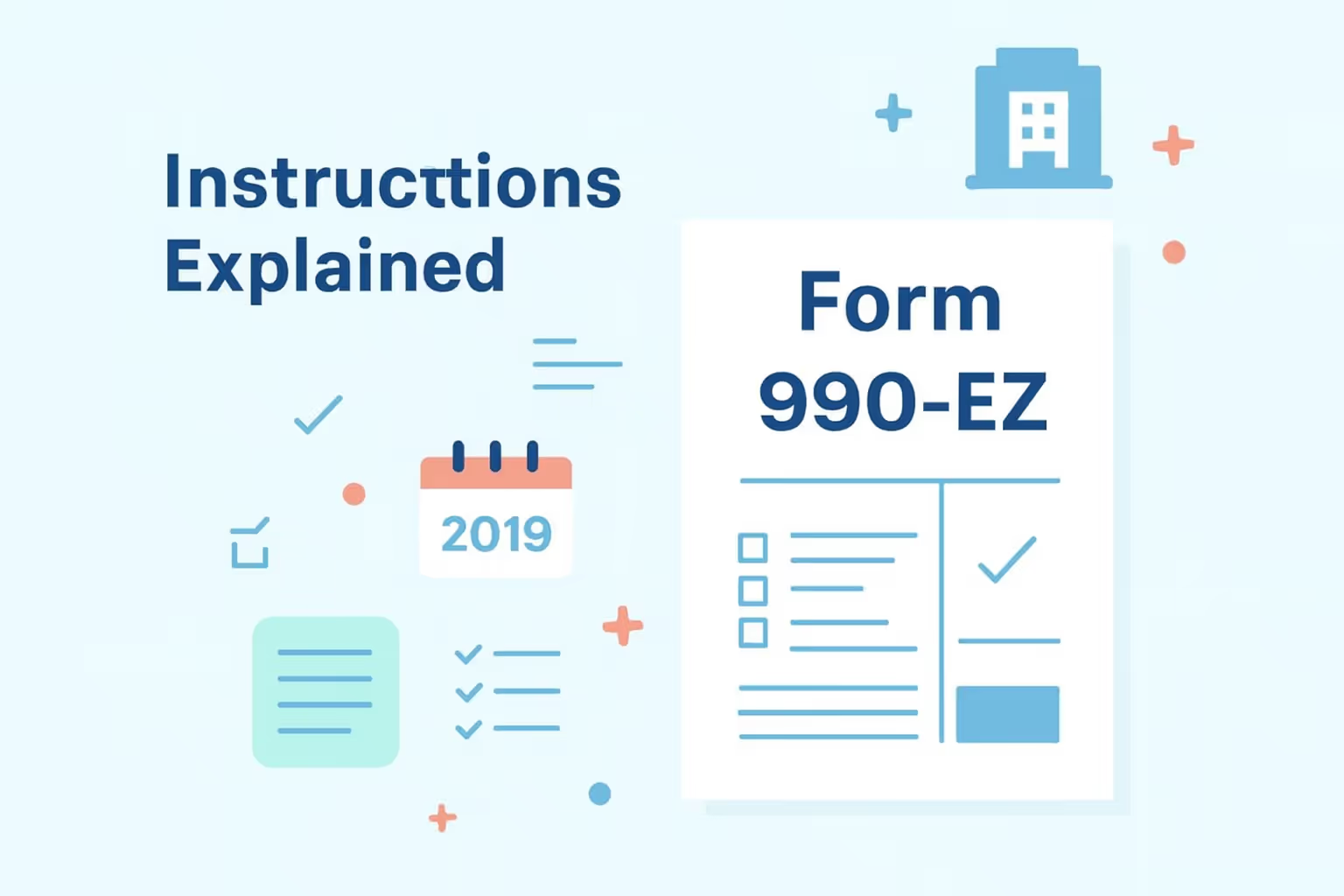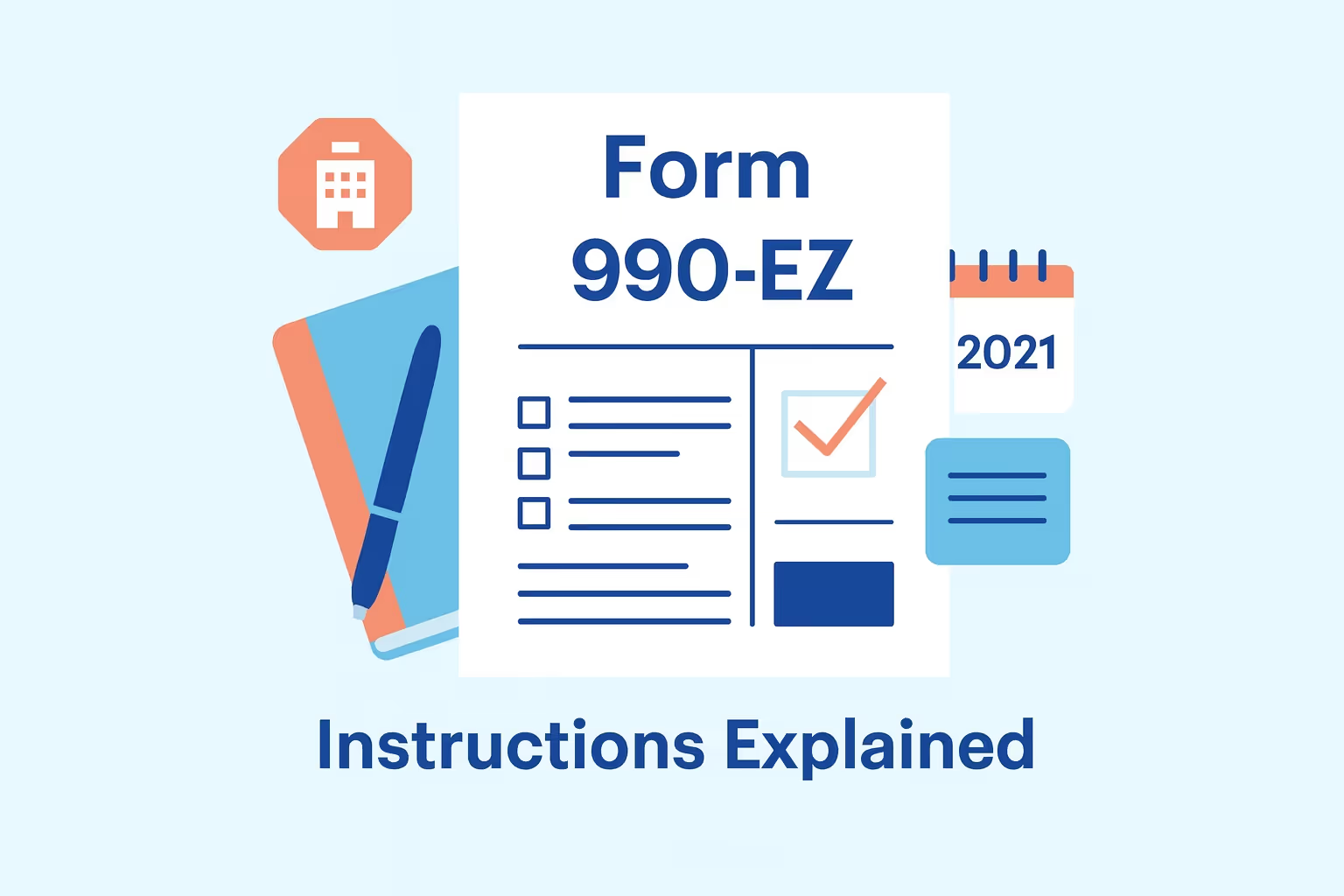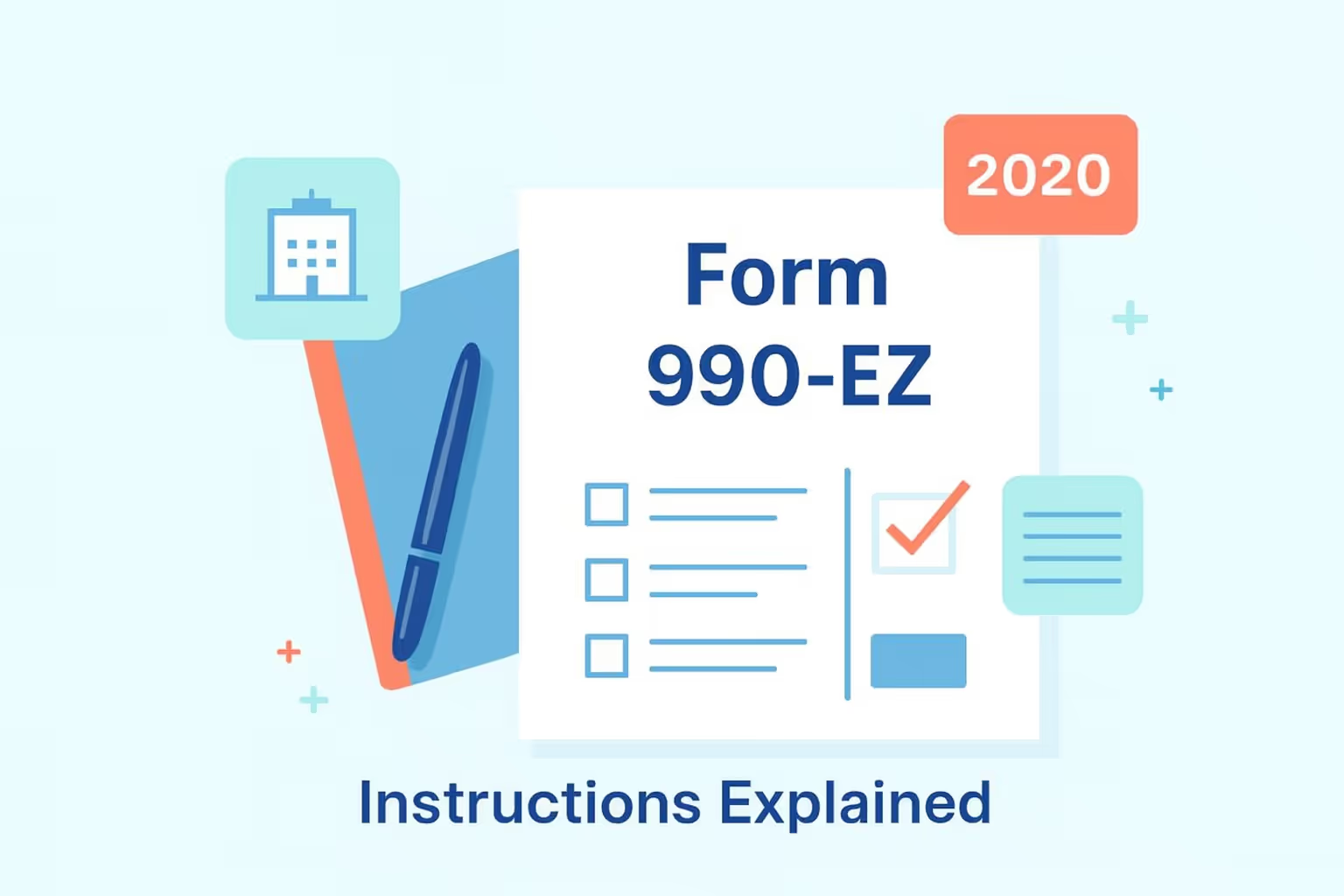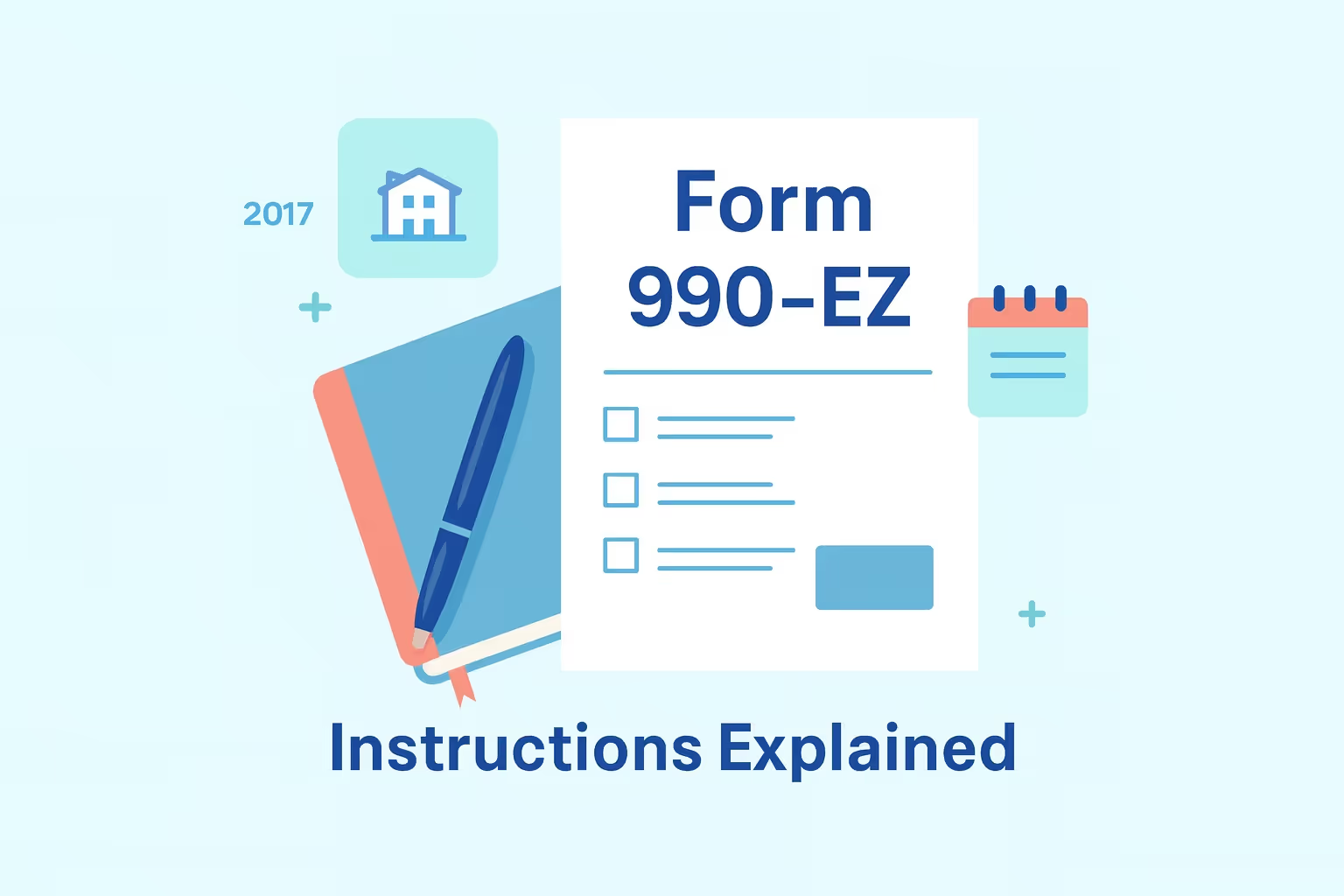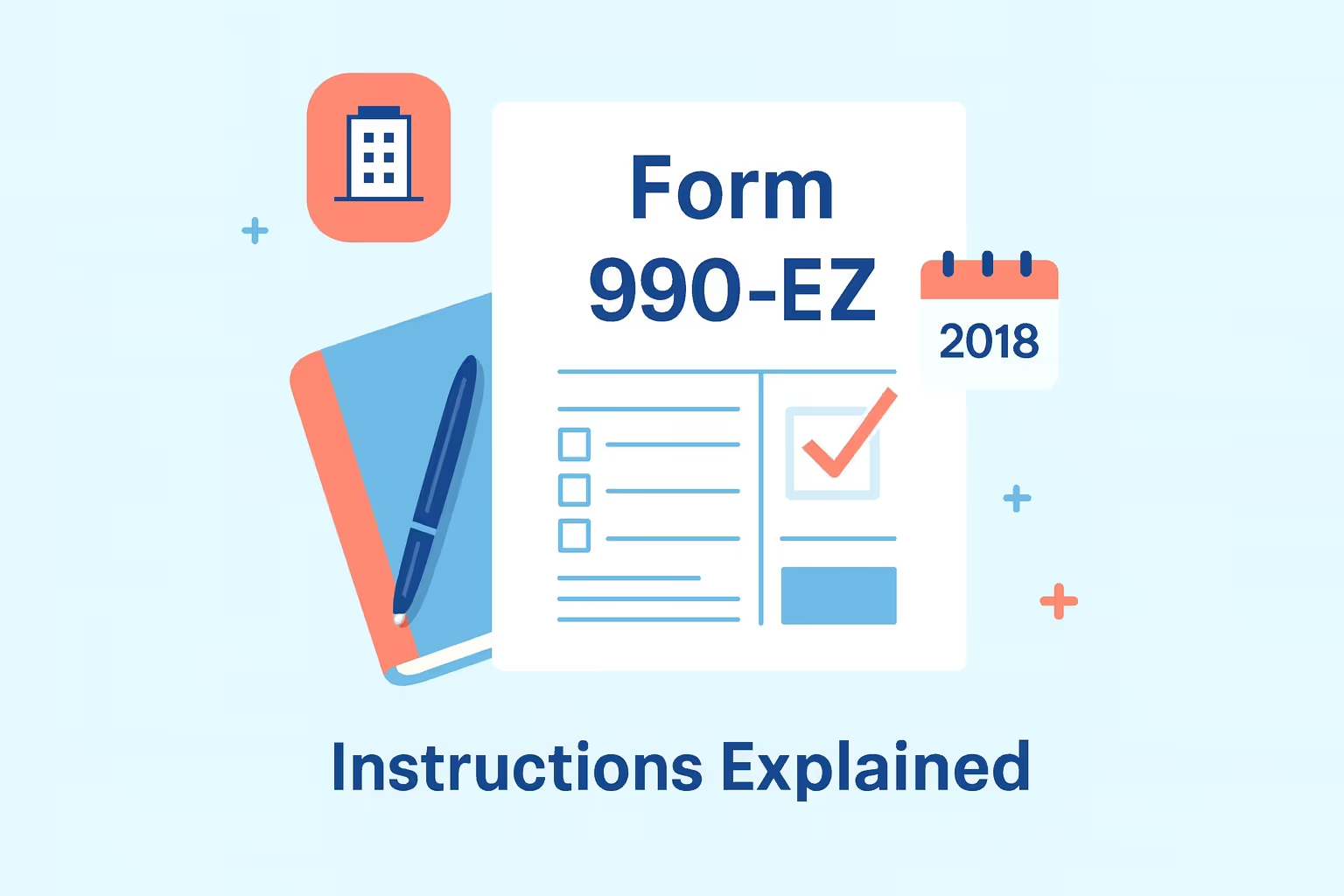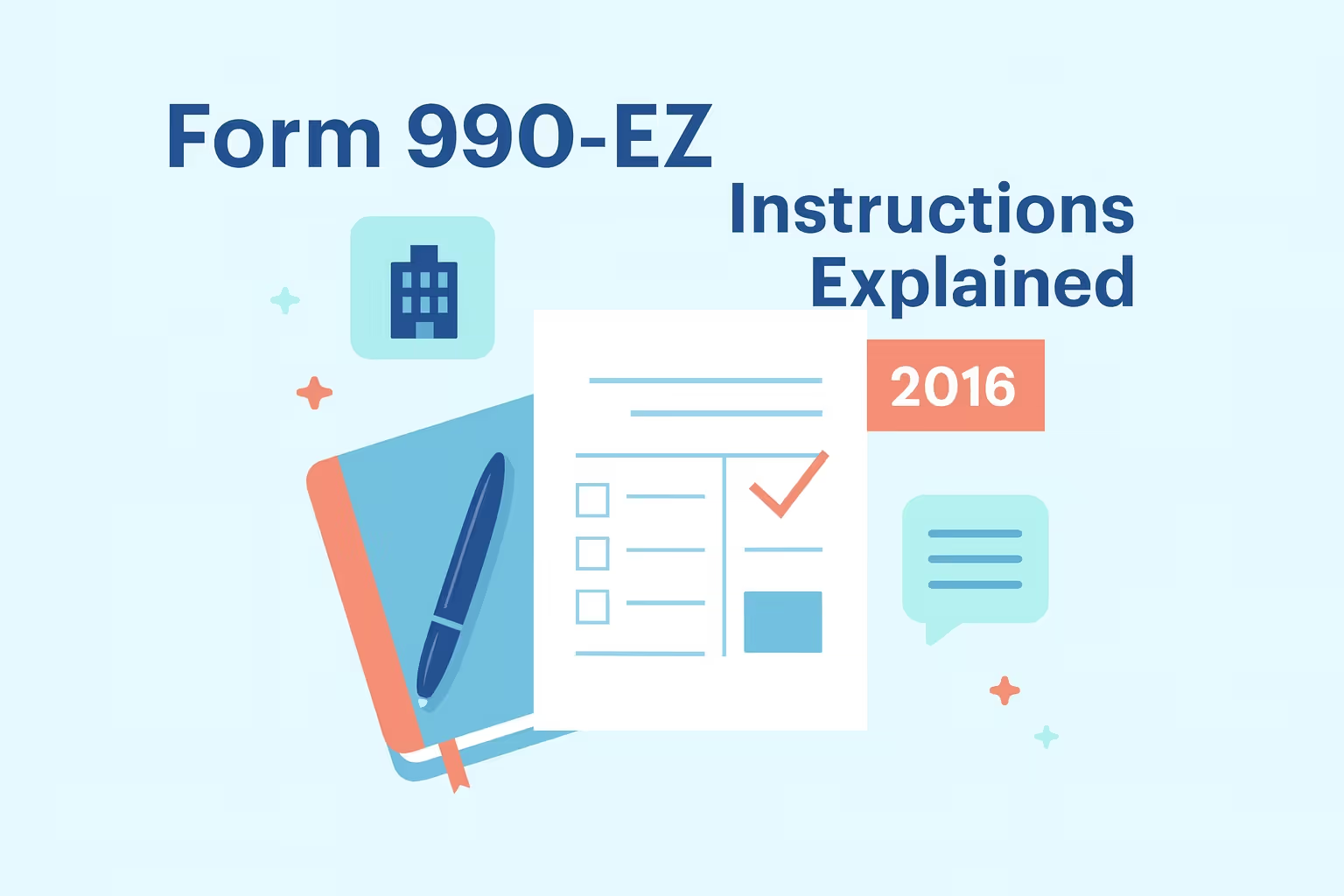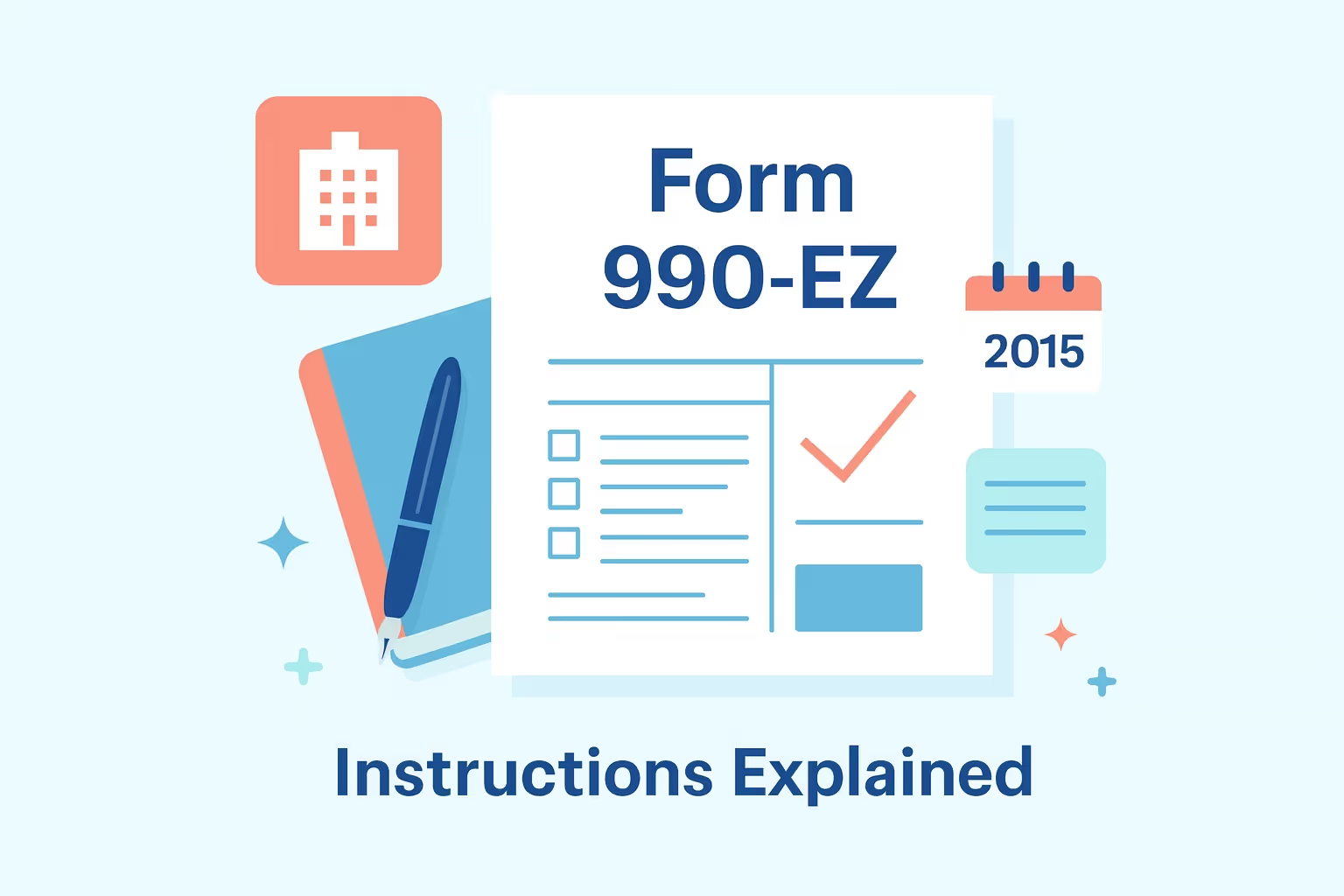
What IRS Form 990-EZ (2016) Is For
IRS Form 990-EZ (2016) is a tax return that tax-exempt organizations must file with the IRS to report their financial activities. It serves as a simplified version of the complete Form 990, designed for nonprofit organizations with gross receipts under $200,000 and total assets under $500,000. Filing this form is essential for maintaining tax-exempt status, meeting tax obligations, and ensuring transparency in reporting revenue and expenses.
The form provides the IRS and the public with an overview of how the organization allocates its resources and works towards its mission. Timely and accurate filing of Form 990-EZ ensures the organization remains compliant with IRS rules and continues to operate effectively under its tax exemption.
For a detailed breakdown of filing requirements, eligibility rules, and reporting standards, see our Federal Specialty Forms Complete Guide to Filing.
When You’d Use IRS Form 990-EZ
IRS Form 990-EZ is required for tax-exempt organizations that meet specific criteria, such as having gross receipts under $200,000 and total assets under $500,000 in the tax year. These organizations must file this form to maintain compliance with IRS law and report accurate information about their finances. Organizations must qualify for Form 990-EZ based on their revenue and the type of activities they engage in, ensuring proper documentation is submitted by the required deadline.
Filing this form also helps nonprofits avoid penalties and demonstrate that they are organized and operating within the guidelines. Be sure to review the 'Last Reviewed' section for any updated requirements before submitting. Failing to meet these standards can affect the tax-exempt status of the organization.
Key Rules or Details for 2016
For 2016, nonprofits must file Form 990-EZ if their gross receipts are under $200,000 and total assets are below $500,000. Organizations that do not meet these eligibility thresholds must file the complete Form 990 instead. It is essential to correct errors from previous filings and ensure the date and other information submitted are accurate.
- Nonprofits must file Form 990-EZ annually to remain in compliance with IRS regulations.
- Review the IRS's last reviewed or updated guidelines before submission.
- Ensure that all information is complete and accurate before submitting.
The IRS updates the filing requirements annually, so organizations must visit the official site to confirm any updated requirements. Filing on time ensures that nonprofits maintain their tax-exempt status and meet their tax obligations.
Step-by-Step (High Level)
Filing Form 990-EZ requires following a straightforward process. The steps below outline the general approach to completing and submitting the form:
- Gather necessary documents: Collect financial records such as income statements, balance sheets, and expense reports.
- Verify eligibility: Ensure that your organization meets the criteria to file Form 990-EZ, such as gross receipts under $200,000.
- Fill out the form: Complete all sections of Form 990-EZ, making sure to include accurate revenue and expenses.
- Review and finalize: Review the form for errors and confirm that all required schedules and documents are included.
- Submit the form: File on time to avoid penalties and maintain your tax-exempt status.
Common Mistakes and How to Avoid Them
When filing Form 990-EZ, organizations often make avoidable mistakes that can lead to penalties. One common mistake is failing to ensure that all information is accurate and complete before submission. For example, individuals responsible for filing should double-check that all schedules and supporting documents are included.
Another mistake is not meeting the tax obligations by missing the filing deadline. Organizations should ensure that they file on time, as delays can result in paying penalties. Note that the locked padlock icon ensures secure electronic filing, helping to prevent security breaches.
To avoid errors, take the time to review the form thoroughly before submission. Filing accurately and on time is the best way to maintain compliance with IRS regulations and avoid complications.
What Happens After You File
Once you have submitted Form 990-EZ, the IRS will begin processing your filing. If everything is in order, you should receive a confirmation letter, acknowledging that your submission has been accepted. The IRS may review your filing for discrepancies or missing information, which could lead to further inquiries.
If there are issues with your submission, the IRS may request additional explanation or supporting documents. You may also need to prove eligibility if the IRS finds discrepancies or inconsistencies in your financial reports. A timely response is essential, as delays could affect your tax obligations.
The IRS processing time typically takes several hours to several weeks, depending on your filing status. Be prepared to respond promptly to avoid complications and maintain compliance with tax requirements.
FAQs
What are the penalties for filing Form 990-EZ late?
Late filing can result in penalties of $20 per day, up to a maximum of $12,000 or 5% of gross receipts, whichever is less. Larger organizations with gross receipts over $1 million face penalties of $120 per day. To avoid this, it's essential to meet your tax obligations and file on time.
How do I amend my Form 990-EZ?
To amend your Form 990-EZ, you must file a corrected return with the IRS and explain the amendments. The IRS may require supporting documents to prove the changes. Make sure to submit the corrected form within a reasonable time frame to avoid penalties.
What happens if I don’t file Form 990-EZ for three consecutive years?
Failure to file Form 990-EZ for three consecutive years results in the automatic removal of your tax-exempt status. To reinstate your status, you must submit a new application and pay the required fees. It's crucial to maintain compliance to avoid this outcome.
Can I apply for an extension to file Form 990-EZ?
Yes, organizations can request an extension to file Form 990-EZ. This relief gives organizations an additional time frame to submit the form, but the request must be submitted before the due date. Ensure all required information is included in the extension application.
How do I address a rejected Form 990-EZ?
If the IRS rejects your Form 990-EZ, you must carefully review their feedback and make any necessary changes. Be sure to address any issues such as missing information or discrepancies. Resubmit the form with the correct information to meet tax obligations.
For additional resources related to nonprofit filings and prior-year IRS forms, visit our Federal Fillable Tax Forms and Guides Library.











